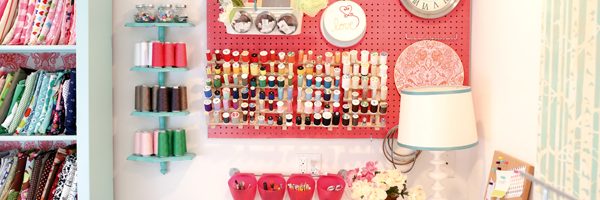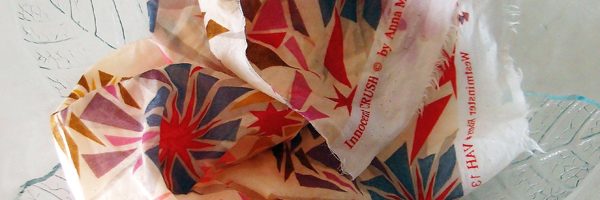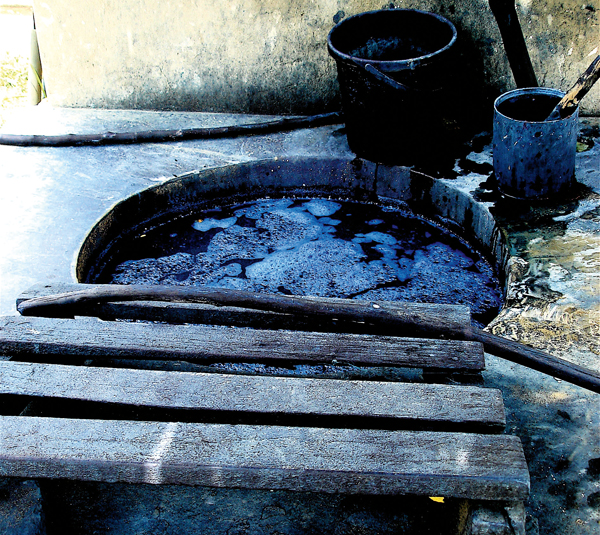
Indian Textiles and Craft
Sally Campbell, of Sally Campbell Handmade Textiles, joins us this issue to share her knowledge of Indian textiles.
By Sally Campbell
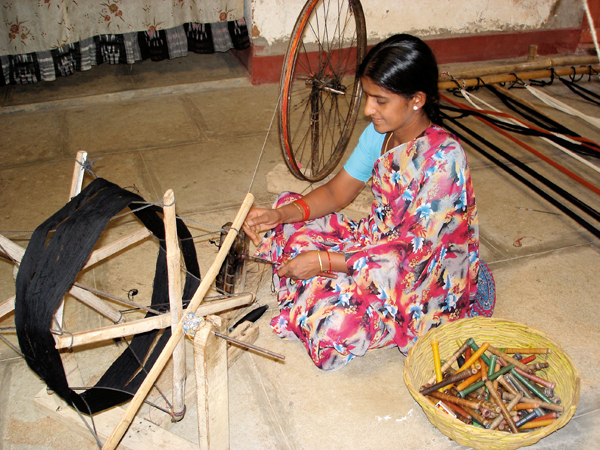
For eight years now I have been designing handmade textiles in India. I design textiles for the home plus a small clothing range. It has been a constantly thrilling experience, often nerve-wracking and unpredictable. My many years working in the film industry as a set and costume designer was perfect training for the so-called “Indian experience”.
Make a set of sewing accessories with Vicki Porter’s sweet embroidery pattern!
My first collection was an introduction into what lay ahead. Getting the samples made took months while I waited around endlessly in havelis, private Indian residences. I was constantly told “next week Madame, next week”. Two weeks turned into two months. Excuses of weddings, religious holidays and bad weather were constant. Were they excuses or just a fact of life?
Finally, when the orders were completed, they were all sewn into calico packaging and loaded onto a truck heading for Delhi, normally a seven-hour drive. Unfortunately, I was still waiting two weeks later in Mumbai for news of what had happened to the goods I had spent my life savings on. Eventually, while stuck in the middle of a Ganesh Elephant God festival with 10 million psychedelic dye-covered Indians, the phone call came through telling Madame her goods had arrived. Many apologies but it seems the late delivery was because the driver had stopped in every village on the way to celebrate Ganesh.

Since then I have returned to India four times a year to work with many artisans all over the country, who are a constant source of inspiration to me. They are forever teaching me new weaving techniques, dyeing and printing methods. My biggest obsessions are natural dyes (especially indigo) and patchwork.
Join English paper piecing expert, Sue Daley, as she shows you English paper piecing!
I travel to many different states, depending on which craft they are famous for. I work in Bengal for weaving and hand-stitching and five hours from Kolkata is a famous weaving area called Fulia. My quilts, throws, towels and scarves are hand-spun, hand-woven and then hand-stitched in the villages there, then sent to Kolkata for endless hawk-eye checking. My ikat weaving is done in Hyderabad, where geometric ikat is the specialty.
It’s quite similar to Japanese ikat, which I adore. Gujarat is another one of my haunts and is famous for heaps of crafts. I work with weavers and dyers who are specialists in ajarakh printing, and all experts in natural dyes. My love for indigo, as well as natural dyes, also takes me to villages in Rajasthan. They have exquisite block printers famous for their dabu mud resist methods. Natural dyeing is a total art form and there are only a handful of these brilliant people in India.
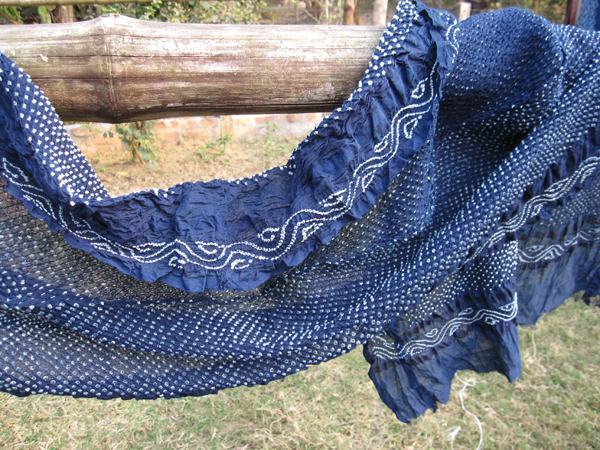
I use all my fabrics to make quilts and clothing — not a scrap is wasted. All leftovers go into making patchworks and I am constantly on all fours scrounging around for yet another tiny patch. The smaller the patches, the better. And no rules apply. I’ll patchwork anything and then have it hand-stitched. Old cotton saris make wonderful patchworks; each is different and unique. A very curious and devout Krishna follower in Kolkata collects old cotton saris for me all year round. Four times a year I sift through thousands of them in a very dark dungeon of a room in intense heat to decide which will make fabulous quilts for very fussy women in the west.
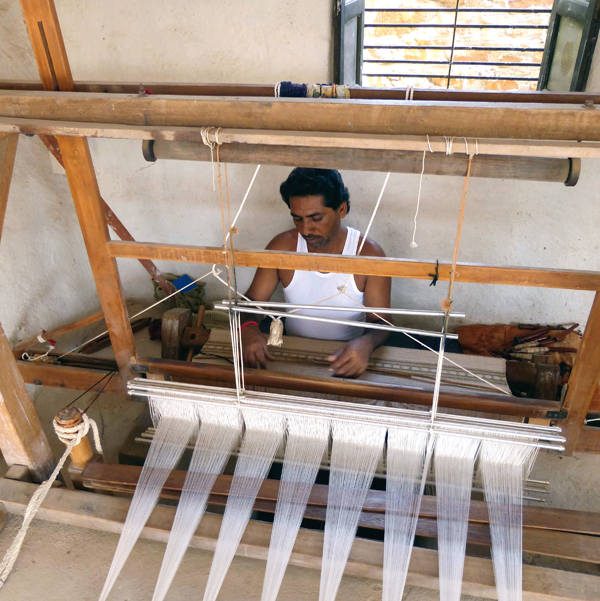
Brush up on your quilting skills with expert-led online classes!
I meet many assorted characters in my travels, all fabulously talented, from young and out there to old and traditional. They include weavers, stitchers, printers, dyers, embroiderers, and dealers in vintage fabrics. Most of these artisans have continued their family trade for generations, but things are now starting to change due to the IT boom. Children don’t want to learn to weave and print in their villages anymore; they have big dreams to go to the cities. Unfortunately, everything to do with craft is related to village life. The disappearing crafts have been revived to a certain extent by NGOs and western designers, but all the same, there is the constant threat of the handloom disappearing.
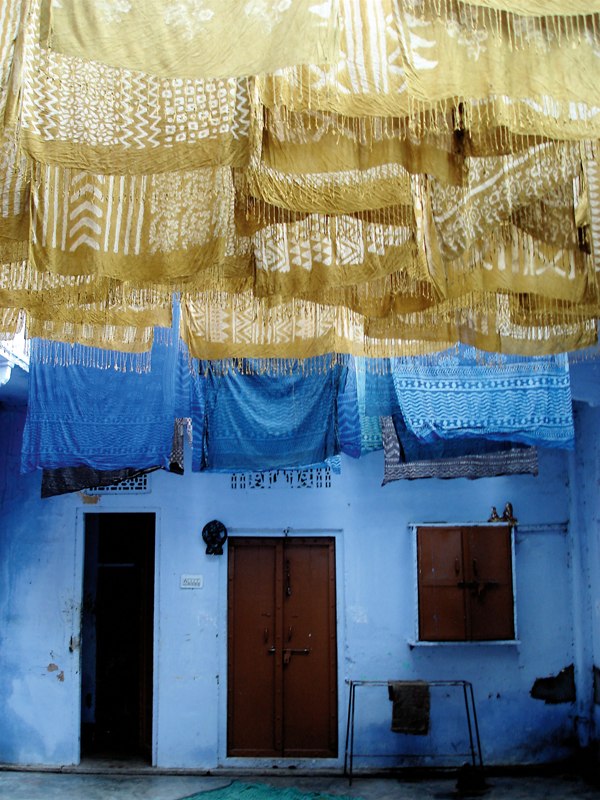
Modern technology has been brilliant for my business. I wouldn’t be able to function without the online shop, blog, Facebook, Instagram, photography and email. All the new airlines in India make it possible for me to travel everywhere cheaply. I can now access the difficult desert areas in four-wheel drives instead of camel and bullock. Trains, thank goodness, are also a thing of the past. They’re great for a laid-back holiday, but a nightmare when it comes to work.
Each trip to India completely blows me away. It is impossible not to find some exquisite new textile in some shape or form.
Visit Sally’s website at http://www.sallycampbell.com.au

